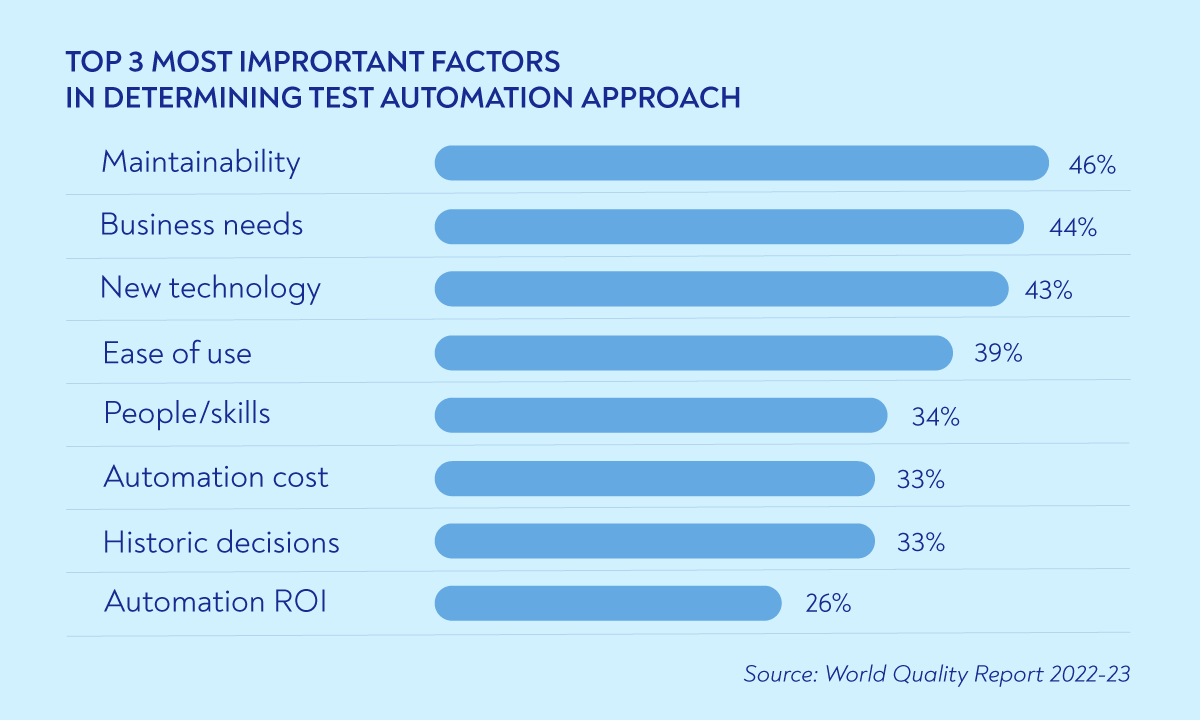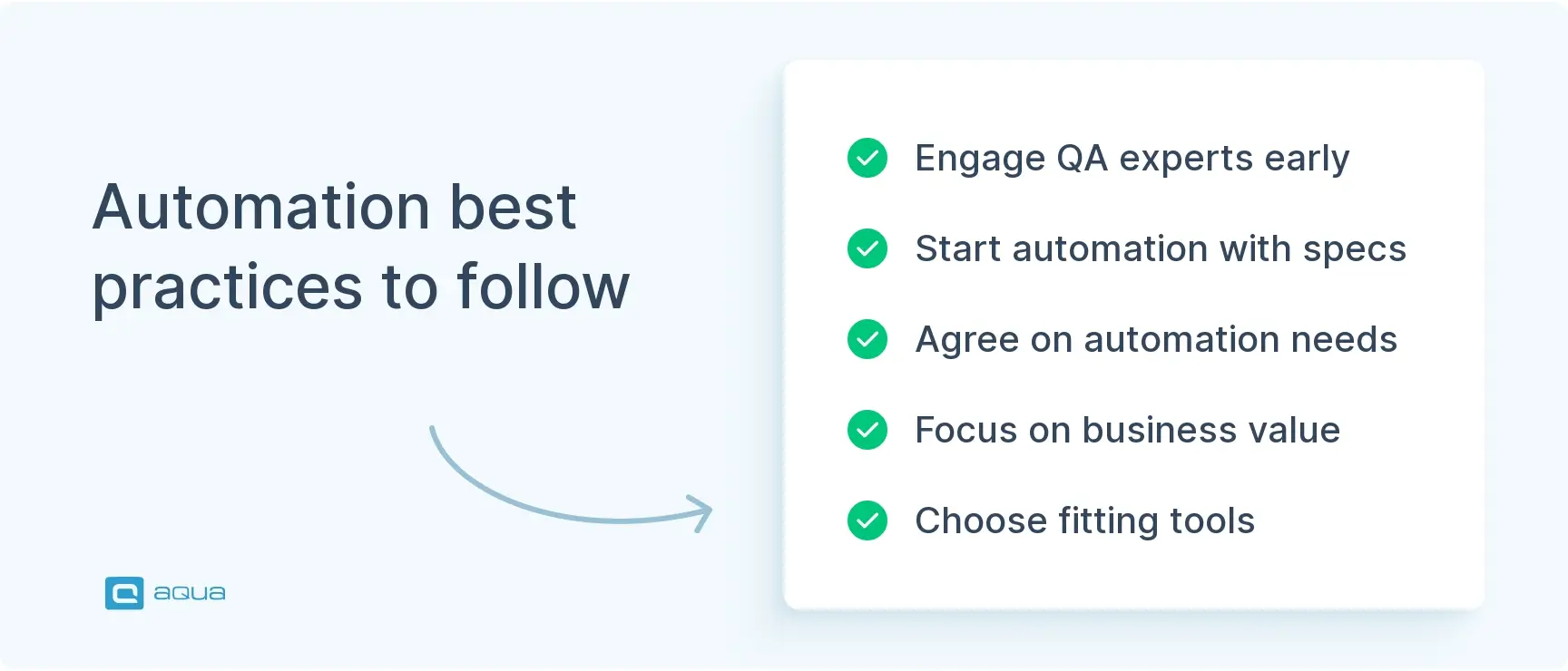You’re seeing companies cut corners with basic Python scripts or Selenium WebDriver when they should be investing in purpose-built frameworks like Cypress or Playwright. Sure, those quick fixes work for early-stage testing, but here’s what most teams miss: your automation strategy needs to evolve with your product’s complexity.
Map your current tech stack against available frameworks before writing another line of test code. Teams that align their tools properly see testing efficiency nearly double within six months. The real pitfall is treating automation as an afterthought instead of designing it alongside your digital transformation roadmap.
Digital transformation is not only a great way to improve software quality, but it also has other benefits of automation testing in software testing:
- Automated testing saves time and money;
- Automated testing improves software quality;
- Automated testing improves collaboration among testers, developers and business stakeholders.
Here are some other insights from the annual World Quality Report 2022-23 about the important factors of test automation towards adopting digital transformation in business.

“We find the priority for most organizations is meeting business needs rather than justifying the technical ROI of automation and that the conversations in organizations have changed from how much a test tool costs to how much value it brings to the business.”
Businesses are still “starving” for solutions that can simultaneously help meet business and IT requirements:
The urge to create environments and deploy codes faster, in addition to getting and processing big data volumes, brings significant value to using automation solutions similar to automation test tools aqua.
So let’s see what automated QA testing advantages are.
Speed up your releases and enhance their quality with better project management
Test automation offers high ROI
Test automation saves time and money. Test automation improves product quality. Test automation reduces the costs of manual testing.
Common Challenges and Best Practices in Digital Transformation QA
Rolling out QA automation during digital transformation? You’re going to hit some bumps. Legacy systems that refuse to play nice with modern tools, security headaches that keep you up at night, and those sprint cycles that move faster than your testing can keep up. Start by mapping your QA goals directly to business outcomes – not just ‘we need more tests.’ Build your test automation pyramid the right way: heavy on unit tests (about 70%), solid API coverage (20%), and just enough UI tests to catch the big stuff (10%). This breakdown nearly halves your maintenance overhead while catching issues earlier.
Pick a single user journey that breaks most often and automate just that end-to-end flow. Track your mean time to detection as your key metric – teams using this approach typically see detection times drop from days to hours. Throw in some behaviour-driven development practices and you’ll get buy-in from both your business folks and developers. The secret sauce isn’t perfect automation from day one; it’s building quality thinking into how your teams already work.
Test automation facilitates DevOps and continuous testing
When you weave test automation into your CI/CD pipeline, you’re essentially creating a safety net that catches issues before they snowball. Every code push triggers automated checks that deliver instant feedback, no waiting around for manual testing cycles.
Pick one critical user journey and automate those tests first. Your teams can push updates confidently without sacrificing quality for speed. Exactly what digital transformation demands.
Test automation enhances software quality and development speed
You’re probably familiar with the concept of software testing: it’s the process by which developers verify that their code works as expected. It’s an essential step in creating high-quality software, but there’s a problem: it’s time-consuming and tedious to do manually.
“Automation takes risk out of the test environment because it’s dependable and repeatable.”
Software test automation benefits your development here as well. By automating some or all of your tests, you can make them run faster and more frequently than if they were being run by humans. Test automation can help you improve quality by ensuring that new features are tested before they get released, reducing QA costs and allowing teams to focus on more valuable work (like developing new features).
Modern Tools and Technologies Shaping Automated Testing
Today’s automated testing ecosystem offers specialised tools for every testing need you can think of. For UI automation, you’ve got heavy hitters like Selenium WebDriver, Cypress, and Playwright. API testing? Postman and REST Assured have you covered. Performance testing relies on JMeter and k6, while security folks swear by OWASP ZAP and Burp Suite.
Docker and Kubernetes are becoming game-changers for creating test environments that actually mirror production. No more ‘it works on my machine’ headaches.
AI-powered testing tools like aqua cloud are starting to show real promise, too. Self-healing tests that adapt when UI elements change? Smart analytics that spot patterns in test failures?
Start by auditing your current tech stack and team skills. Pick one tool category where you’re weakest and run a small pilot project. The key is choosing tools that play nice with your existing CI/CD setup rather than forcing a complete overhaul.
Test automation increases reliability, productivity and accuracy
Test automation can help you find defects faster, reduce the time needed to test new features and keep your application stable. It’s not a silver bullet, but it’s an important part of a comprehensive testing strategy.
Test automation improves collaboration
Automation testing can also help improve communication between testers, developers and business stakeholders by providing a shared language for discussing issues with an application’s design or functionality. When everyone uses the same terminology (for example: “test case” instead of “test script”), it makes it easier for everyone involved in building an application to understand each other’s points of view on what needs improving.
Conclusion
Automated testing is a must-have if you want to succeed in the modern digital landscape.
To kill your hesitation about whether you need automated software, here is a list of some automation initiatives to undertake:
- Work earlier with quality automation experts.
- Automation starts as the requirements are being created; build an automation-first approach to the requirements and stories.
- Get automation requirements agreed on before you start to automate.
- Focus on what delivers the best benefits to customers and the business rather than justifying ROI.
- Review your tooling and frameworks regularly.
- Plan a roadmap for at least the next three years.
- One tool doesn’t do everything. Pick the best tools for the job. Don’t try and make one tool do everything.
- Invest in people. Stop chasing after unicorns and work with the people you have – they know your business.
Automated testing is an important part of digital transformation. It’s a powerful tool for improving software quality, increasing productivity and efficiency, and making your business more competitive.

Hook up one of the robust integrations to enhance your QA

















